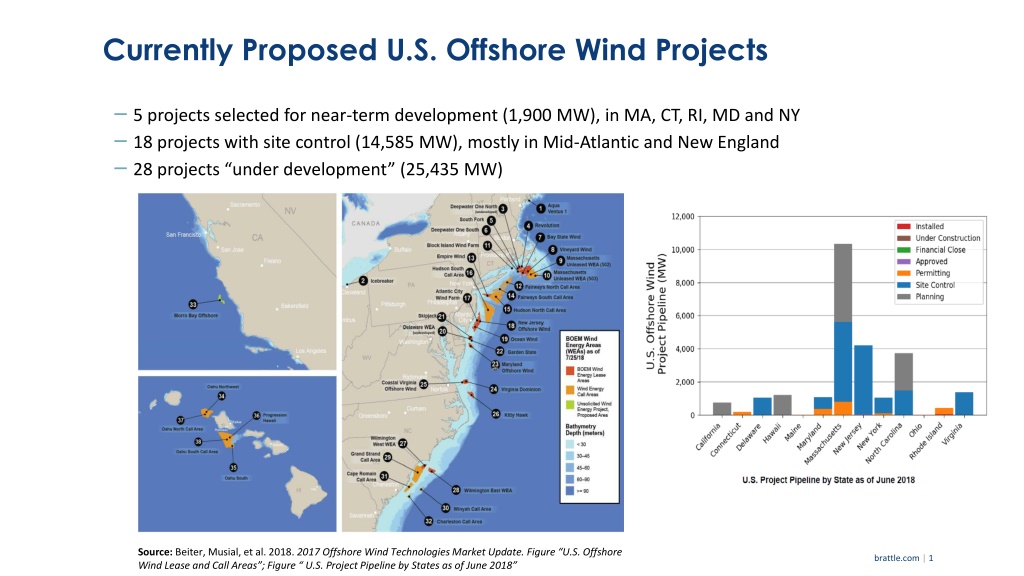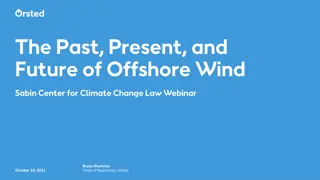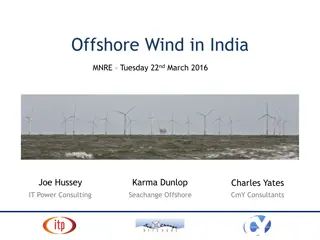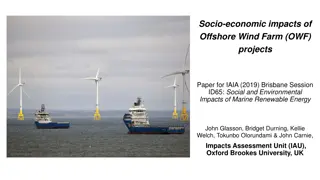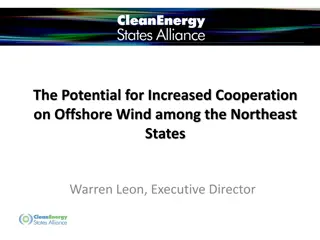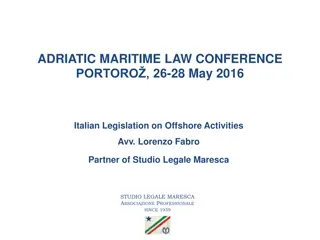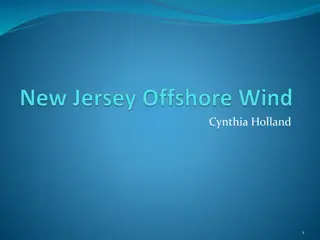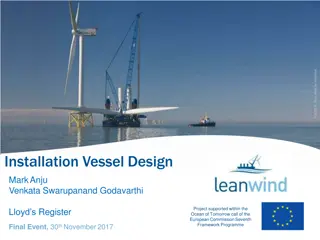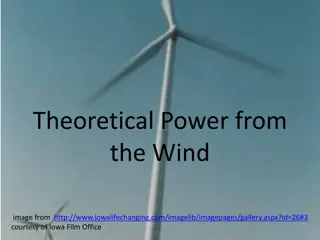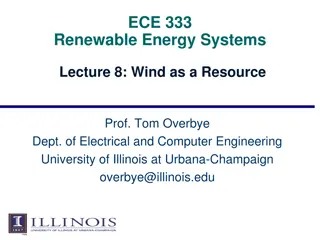Current State of U.S. Offshore Wind Projects and Market Dynamics
Several U.S. states are advancing offshore wind projects with significant capacity. The market value varies across regions, with New England leading at $110/MWh. Concerns exist regarding state-supported resources and competitive market dynamics. The ISO-NE's approach aims to balance wholesale markets and state policies. The incentives and payment structures in place raise questions about cost-effectiveness and market competitiveness.
Download Presentation

Please find below an Image/Link to download the presentation.
The content on the website is provided AS IS for your information and personal use only. It may not be sold, licensed, or shared on other websites without obtaining consent from the author. Download presentation by click this link. If you encounter any issues during the download, it is possible that the publisher has removed the file from their server.
E N D
Presentation Transcript
Currently Proposed U.S. Offshore Wind Projects 5 projects selected for near-term development (1,900 MW), in MA, CT, RI, MD and NY 18 projects with site control (14,585 MW), mostly in Mid-Atlantic and New England 28 projects under development (25,435 MW) Source: Beiter, Musial, et al. 2018. 2017 Offshore Wind Technologies Market Update. Figure U.S. Offshore Wind Lease and Call Areas ; Figure U.S. Project Pipeline by States as of June 2018 brattle.com | 1
Market Value of Offshore Wind in the U.S. LBNL estimated the total market value of offshore wind generation based on historical market prices for energy, capacity, and RECs: Highest value in New England at $110/MWh New York: $100/MWh Mid-Atlantic (PJM): $70/MWh South of PJM: $40-55/MWh Total costs of Vineyard Wind (MA) is likely in the $70 85/MWh range, after accounting for the capacity market value Source: LBNL (2018). Estimating the Value of Offshore Wind Along the United States Eastern Coast http://eta-publications.lbl.gov/sites/default/files/offshore_erl_lbnl_format_final.pdf brattle.com | 2
Competitive Auctions for Subsidized Policy Resources (CASPR) ISO-NE s Proposed Approach to Balancing Wholesale Markets and States Policies brattle.com | 3
Regional Concerns Over State-Supported Resources Status quo Under Minimum Offer Price Rule (MOPR), most state-supported resources would not clear in FCM Limited MOPR exemption for some new renewables States concern Consumers will pay twice Once for cost of subsidizing state-preferred new resources, and again for additional resources procured in forward capacity market (FCM) Investors concern MOPR is essential to avoid capacity price suppression, and attract (non-state-supported) entry cost- effectively when needed Even if unintentional, subsidized entry has a similar effect as buyer-side market power, if unmitigated Both undermine competitive investment and cost-effectiveness of markets brattle.com | 4
Who Pays What to Whom, and Why? Who pays for this incentive? State subsidies enable high-cost, existing resources to receive a net payment to retire and be replaced by state preferred new resources (e.g., higher-cost clean energy) In the ISO-NE s proposed two-settlement design, the logic is: Subsidies enable new units to offer capacity below their true costs. Provides an opportunity for potentially retiring units to transfer (buy out) their obligations at less than their true cost Retiring units Transfer supply obligations to subsidized units, and transfer part (but not all) of primary forward capacity auction (FCA) payments Keep a portion of primary FCA payment a severance payment in consideration for a final obligation to retire brattle.com | 5
